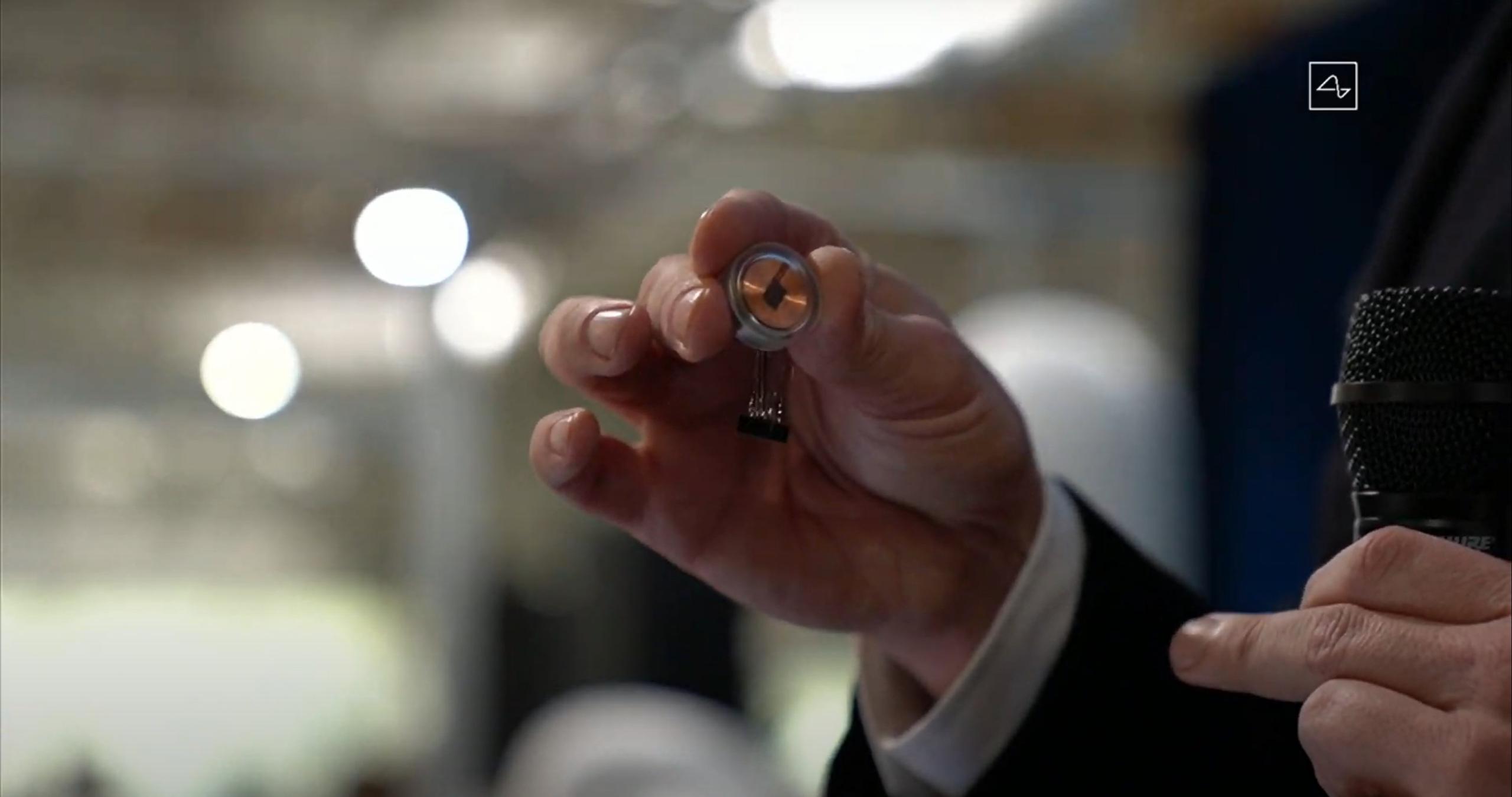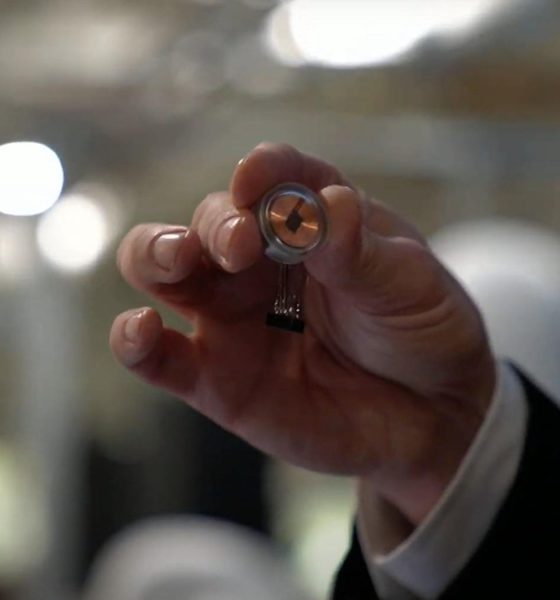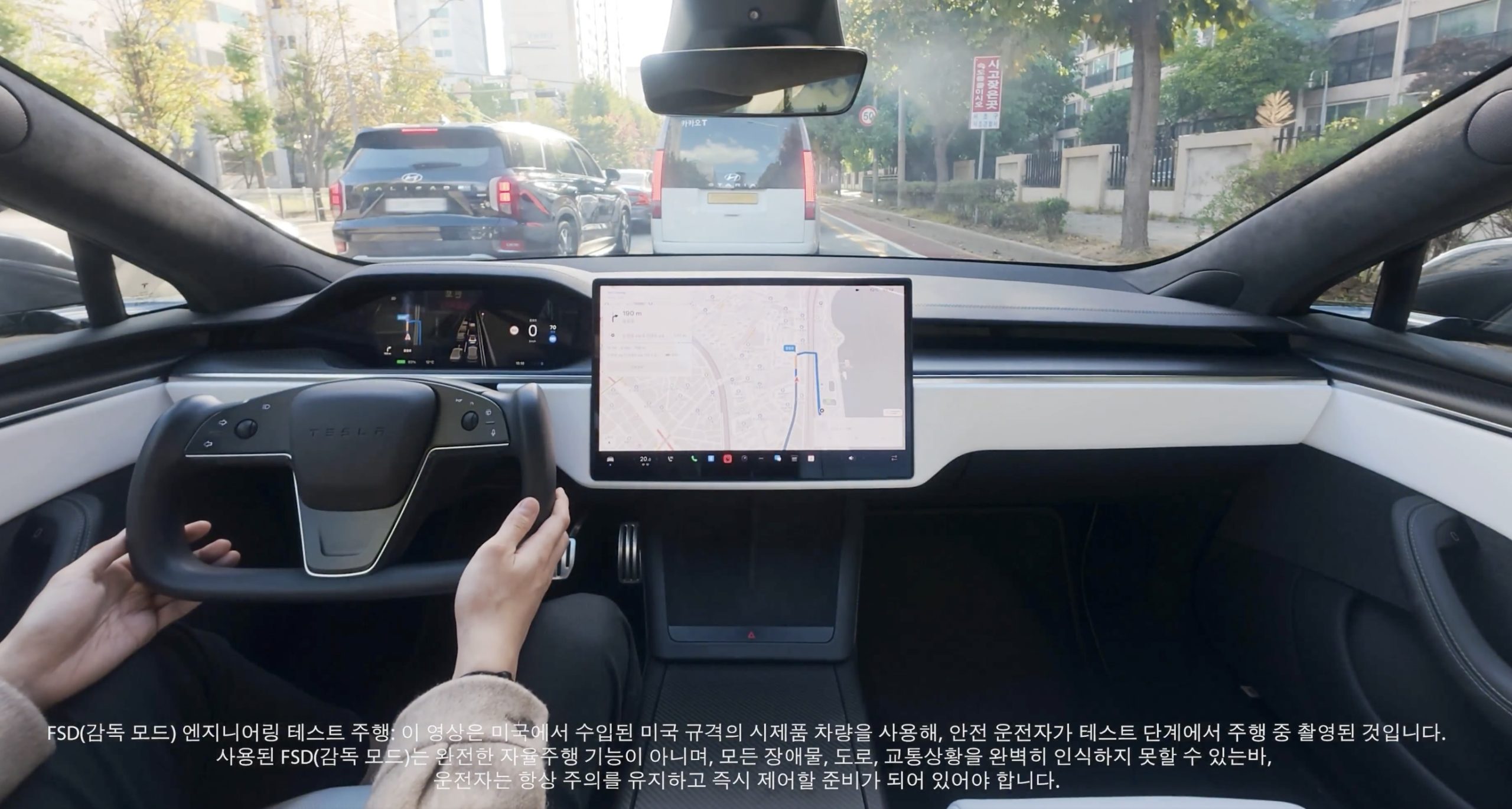

News
Neuralink shouldn’t solve Anxiety and Depression disorders
Neuralink aims to treat some of the most severe and damaging neurological diseases on Earth. In terms of Alzheimer’s, dementia, and epilepsy, a Neuralink device would be a great way to prevent these diseases from ruining everyday life for those who have been affected by them. With that being said, Neuralink needs not to treat anxiety and depression disorders, because those illnesses require human reaction and vulnerability to treat. Defeating anxiety and depression should be done without the help of a complete fix, and it is crucial not to look past the importance of humans being able to feel these two sensations.
This is something I feel very strongly about for several reasons.
Before I dive into those reasons, I want to explain why I feel qualified enough to take a stance that I think many supporters of Neuralink will disagree with.
I have dealt with clinical anxiety and severe depression for my entire life. I was clinically diagnosed in 2009 at the age of 14 with both of these disorders, and I would estimate that it took me around 11 and a half years of diligence on my part to begin living a normal life. My anxiety and depression disorders hindered me from doing a lot of things in my life: playing certain sports, moving away for college (on multiple occasions), keeping past jobs, committing to relationships, etc. It has affected me in the worst way for so many years, and I would never want anyone, even my worst enemy, to experience the things that I felt on a daily basis when I was under the control of these two diseases.
However, I don’t think that everyone should completely rid themselves of anxiety and depression. Why? Because they are two emotions, as humans, we need to have.
Anxiety, while painful and difficult to confront head-on, is necessary for some reasons. The first being the obvious, anxiety is an excellent way to sense when danger is near, and it is a crucial part of our fight or flight response. It can warn someone when there is an issue with what is going on near them and can be life-saving in certain circumstances.
Anxiety also is an opportunity to grow as a human being. Facing and confronting anxious thoughts is one of the best ways to test resilience and learn about what we are made of. Anxiety teaches us a lot about ourselves, and while frightening, facing it directly is one of the best ways to show that we can push through certain circumstances that we aren’t confident about.
This is a preview from our weekly newsletter. Each week I go ‘Beyond the News’ and handcraft a special edition that includes my thoughts on the biggest stories, why it matters, and how it could impact the future.
A big thanks to our long-time supporters and new subscribers! Thank you.
Depression, while more severe in my own experiences, also has its advantages. Without darkness, we wouldn’t know what light is. Without depression, we wouldn’t know about happiness. There are points where humans need to face adversity and challenging circumstances to feel the great things about life.
Now, the way I treated my anxiety and depression disorders was a clinically-focused approach. I regularly attended therapy sessions, took medication, and spoke to doctors as often as I could. While I wholeheartedly believe everyone should talk to a therapist at least three times a year, I disagree with taking medications. In my experience, they are a masking agent for anxiety and depression disorders, especially. They caused me more problems after I started taking them, and the side effects needed treatment on their own.
I believe the best way to treat disorders like anxiety and depression is solely up to the person who is dealing with them. When I started to make real progress with my issues, I began using Exposure Therapy to treat my problems. I did as many things as I could that scared me. This included long drives by myself, roller coasters, and doing more things independently. When I started doing these things, I had stopped taking medication, and my self-diligence started to solve the problems I was facing.
I am in no way condoning that medication is not a wrong way to initially treat these illnesses. However, I do not believe that the healthy dose of side effects that come as a result of taking these medications is helpful to anyone who is being treated for either disorder.
This is where my issue with Neuralink comes in.
I believe that Neuralink intends to completely remove these sensations from a person’s emotions, which I feel can be dangerous to the future. Taking away emotions from humans can be detrimental to the way people communicate with each other and respond to specific events. As hazardous and as stressful as dealing with any mental illness is, solving them requires a long and tiring fight. It is not easy, but anything in life that is worth doing rarely is.
I believe very strongly that removing emotions from humans is one of the most dangerous things that anyone could do. At what point will devices like Neuralink completely take over the human brain? When will emotions begin to disappear from people? Could it lead to a decreased amount of social interaction? How would that make us any different than robots?
It is dangerous, in my opinion, to remove core emotional responses from a human. Nobody wants to be depressed, and nobody wants to be anxious. But treating these diseases is done by finding out who we are as people. It requires us to go out of our comfort zones and grow, not put a chip in our heads or a pill in our throats that eliminates the possibility of feeling certain sensations.
There comes the point where our humanness needs to be preserved. The invention of Smartphones has taken away a lot of opportunities for face-to-face interaction, and there is plenty of evidence to suggest that anxiety and depression disorders are caused by these devices, especially through social media use.
I am interested to hear other points on this matter because I know some people have different experiences with anxiety and depression than me. One thing I’ve always loved is hearing other people’s stories about how their anxiety or depression changed their lives. It usually starts with a valley and turns into a peak. While this can differ from case to case, two people rarely have identical stories when talking about their experiences. They also, frequently, are different from one case to the next because of how we obtained anxiety or depression. Some get it through abuse, and some get it from other forms of trauma when their brain is developing.
Neuralink is yet another brilliant idea from Elon Musk. It will hopefully change the way certain neurological diseases are treated and can provide some insight into what causes these medical conditions. However, there has to be boundaries and taking emotions and psychological responses away, in my opinion, is not the right thing to do. To quote Dr. Martin Luther King Jr., “Darkness cannot drive out darkness; only light can do that.”
I use this newsletter to share my thoughts on what is going on in the Tesla world. If you want to talk to me directly, you can email me or reach me on Twitter. I don’t bite, be sure to reach out!

News
Tesla Full Self-Driving lands in a new country, its 7th

Tesla Full Self-Driving has officially landed in a new country today, its seventh overall after it launched in both Australia and New Zealand earlier this year.
On Sunday, Tesla owners in South Korea reported that the company’s Full Self-Driving (Supervised) had started arriving in their vehicles. Owners reported that it was v14.1.4, which is not the latest version available in other countries, but is one of the most recent releases Tesla has deployed to drivers:
From 6 to 7
Tesla Full Self-Driving has launched in South Korea; the 7th country to have FSD https://t.co/X6gm1SyoxV
— TESLARATI (@Teslarati) November 23, 2025
This marks the seventh country in which Tesla has enabled its Full Self-Driving suite, following the United States and Puerto Rico, Canada, China, Mexico, Australia, and New Zealand.
Tesla launched Full Self-Driving most recently in Australia and New Zealand about three months ago. The expansion is a major breakthrough for the company as it aims to launch Full Self-Driving on a global scale.
However, the company’s biggest challenge thus far has been getting European regulatory agencies to handle the red tape that has inhibited Tesla from launching its semi-autonomous driving suite on the continent. Recently, it admitted that it sees a pathway through Dutch regulatory bodies, which seem to be the most willing to work with Tesla to get FSD in Europe.
Tesla Full Self-Driving appears to be heading to Europe soon
The company said that it has driven over 1 million kilometers safely on European roads across 17 different countries in internal testing. But its path to success will be by “partnering with the Dutch approval authority RDW to gain exemption for the feature. This involves proving compliance with existing regulations (UN-R-171 DCAS) + filing an exemption (EU Article 39) for yet-to-be-regulated behaviors like Level 2 systems off-highway, system-initiated lane changes with hands-off the wheel, etc.”
Perhaps the expansion into Europe will be the biggest challenge for Tesla, but it could also yield major results and advantages for the company moving forward. Tesla said it hopes to have FSD available in Europe sometime early next year.
For now, the expansion in South Korea is the latest win for Tesla and its self-driving efforts. In the U.S., it now turns its focus toward fully autonomous operation, as it works with state agencies to launch Robotaxi outside of Texas, California, and most recently, Arizona.
Elon Musk
Tesla CEO Elon Musk teases insane capabilities of next major FSD update

Tesla CEO Elon Musk teased the insane capabilities of the next major Full Self-Driving update just hours after the company rolled out version 14.2 to owners.
Tesla Full Self-Driving v14.2 had some major improvements from the previous iteration of v14.1.x. We were on v14.1.7, the most advanced configuration of the v14.1 family, before Tesla transitioned us and others to v14.2.
However, Musk has said that the improvements coming in the next major update, which will be v14.3, will be where “the last big piece of the puzzle finally lands.”
14.3 is where the last big piece of the puzzle finally lands
— Elon Musk (@elonmusk) November 21, 2025
There were some major improvements with v14.2, most notably, Tesla seemed to narrow in on the triggers that caused issues with hesitation and brake stabbing in v14.1.x.
One of the most discussed issues with the past rollout was that of brake stabbing, where the vehicle would contemplate proceeding with a route as traffic was coming from other directions.
We experienced it most frequently at intersections, especially four-way stop signs.
Elon Musk hints at when Tesla can fix this FSD complaint with v14
In our review of it yesterday, it was evident that this issue had been resolved, at least to the extent that we had no issues with it in a 62-minute drive, which you can watch here.
Some owners also reported a more relaxed driver monitoring system, which is something Tesla said it was working on as it hopes to allow drivers to text during operation in the coming months. We did not test this, as laws in Pennsylvania prohibit the use of phones at any time due to the new Paul Miller’s Law, which took effect earlier this year.
However, the improvements indicate that Tesla is certainly headed toward a much more sentient FSD experience, so much so that Musk’s language seems to be more indicative of a more relaxed experience in terms of overall supervision from the driver, especially with v14.3.
Musk did not release or discuss a definitive timeline for the release of v14.3, especially as v14.2 just rolled out to Early Access Program (EAP) members yesterday. However, v14.1 rolled out to Tesla owners just a few weeks ago in late 2025. There is the potential that v14.3 could be part of the coming Holiday Update, or potentially in a release of its own before the New Year.
News
Tesla Full Self-Driving v14.2 – Full Review, the Good and the Bad

Tesla rolled out Full Self-Driving version 14.2 yesterday to members of the Early Access Program (EAP). Expectations were high, and Tesla surely delivered.
With the rollout of Tesla FSD v14.2, there were major benchmarks for improvement from the v14.1 suite, which spanned across seven improvements. Our final experience with v14.1 was with v14.1.7, and to be honest, things were good, but it felt like there were a handful of regressions from previous iterations.
While there were improvements in brake stabbing and hesitation, we did experience a few small interventions related to navigation and just overall performance. It was nothing major; there were no critical takeovers that required any major publicity, as they were more or less subjective things that I was not particularly comfortable with. Other drivers might have been more relaxed.
With v14.2 hitting our cars yesterday, there were a handful of things we truly noticed in terms of improvement, most notably the lack of brake stabbing and hesitation, a major complaint with v14.1.x.
However, in a 62-minute drive that was fully recorded, there were a lot of positives, and only one true complaint, which was something we haven’t had issues with in the past.
The Good
Lack of Brake Stabbing and Hesitation
Perhaps the most notable and publicized issue with v14.1.x was the presence of brake stabbing and hesitation. Arriving at intersections was particularly nerve-racking on the previous version simply because of this. At four-way stops, the car would not be assertive enough to take its turn, especially when other vehicles at the same intersection would inch forward or start to move.
This was a major problem.
However, there were no instances of this yesterday on our lengthy drive. It was much more assertive when arriving at these types of scenarios, but was also more patient when FSD knew it was not the car’s turn to proceed.
Can report on v14.2 today there were ZERO instances of break stabbing or hesitation at intersections today
It was a significant improvement from v14.1.x
— TESLARATI (@Teslarati) November 21, 2025
This improvement was the most noticeable throughout the drive, along with fixes in overall smoothness.
Speed Profiles Seem to Be More Reasonable
There were a handful of FSD v14 users who felt as if the loss of a Max Speed setting was a negative. However, these complaints will, in our opinion, begin to subside, especially as things have seemed to be refined quite nicely with v14.2.
Freeway driving is where this is especially noticeable. If it’s traveling too slow, just switch to a faster profile. If it’s too fast, switch to a slower profile. However, the speeds seem to be much more defined with each Speed Profile, which is something that I really find to be a huge advantage. Previously, you could tell the difference in speeds, but not in driving styles. At times, Standard felt a lot like Hurry. Now, you can clearly tell the difference between the two.
It seems as if Tesla made a goal that drivers should be able to tell which Speed Profile is active if it was not shown on the screen. With v14.1.x, this was not necessarily something that could be done. With v14.2, if someone tested me on which Speed Profile was being used, I’m fairly certain I could pick each one.
Better Overall Operation
I felt, at times, especially with v14.1.7, there were some jerky movements. Nothing that was super alarming, but there were times when things just felt a little more finicky than others.
v14.2 feels much smoother overall, with really great decision-making, lane changes that feel second nature, and a great speed of travel. It was a very comfortable ride.
The Bad
Parking
It feels as if there was a slight regression in parking quality, as both times v14.2 pulled into parking spots, I would have felt compelled to adjust manually if I were staying at my destinations. For the sake of testing, at my first destination, I arrived, allowed the car to park, and then left. At the tail-end of testing, I walked inside the store that FSD v14.2 drove me to, so I had to adjust the parking manually.
This was pretty disappointing. Apart from parking at Superchargers, which is always flawless, parking performance is something that needs some attention. The release notes for v14.2. state that parking spot selection and parking quality will improve with future versions.
Any issues with parking on your end? 14.1.7 didn’t have this trouble with parking pic.twitter.com/JPLRO2obUj
— TESLARATI (@Teslarati) November 21, 2025
However, this was truly my only complaint about v14.2.
You can check out our full 62-minute ride-along below:








